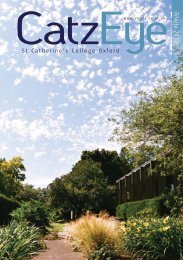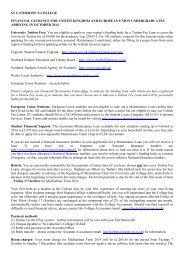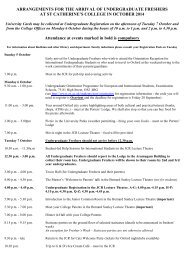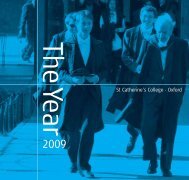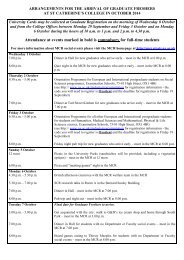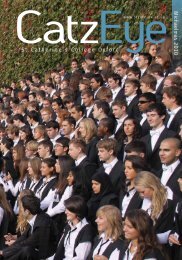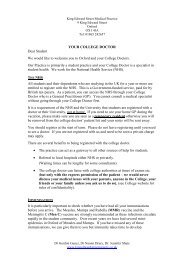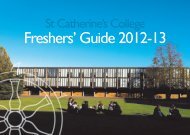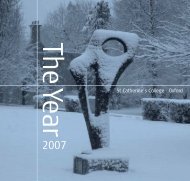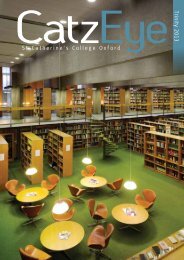Download PDF - St. Catherine's College
Download PDF - St. Catherine's College
Download PDF - St. Catherine's College
- No tags were found...
You also want an ePaper? Increase the reach of your titles
YUMPU automatically turns print PDFs into web optimized ePapers that Google loves.
Photograph © Ben <strong>St</strong>ansallProfessor Michael SullivanEmeritus FellowAs a young man, Michael Sullivan visitedthe great exhibition of Chinese art at theRoyal Academy, and what he saw there –particularly the paintings and ceramics ofthe Song Dynasty – made a deep and lastingimpression upon him. After graduating witha degree in Architecture from Cambridge,Michael worked with a documentary film unitbefore, in February 1940, going to China asa volunteer with the International Red Cross.It was in the country’s wartime capital,Chongqing, that he met his future wife,Khoan, who would later give up her ownpromising career in science to devote herselfto Michael’s work, acting as his translator,secretary and constant companion, travellingeverywhere with him and making friends forhim with the Chinese artists to whom hewould otherwise always have been aforeigner. The couple were married in 1943in Chengdu, where they met a number ofChinese artists, several of whom gave thecouple paintings and drawings that wouldform the nucleus of their future collection.In the spring of 1946, Michael and Khoancame to London. Even though his real interestlay in the study of Chinese art, Michael – on ascholarship from the Chinese Government –went to the School of Oriental and African<strong>St</strong>udies (SOAS) to study Chinese language.During his time there he was approachedby Faber and Faber to suggest revisionsand corrections for Arnold Silcock’s popularhistory of Chinese art. His suggestions foremendations were so extensive that Faberasked him to write a new book: AnIntroduction to Chinese Art.In 1949, he was invited to mount anexhibition of Chinese art at Dartington Hallin Devon and, while there, was approached byan American visitor who asked if he had everconsidered postgraduate study in the United<strong>St</strong>ates. Having dismissed the idea as animpossible dream, Michael was astonishedto be contacted by the visitor – the Directorof Humanities at the Rockefeller Foundation –asking why he had not been in contact. In thesummer of 1950, Khoan and Michael wentto Harvard, where they would stay for thenext four years: his Harvard Fellowship wasfollowed by another scholarship and, afterhe had received his doctorate in 1952, by aBollingen Fellowship. In 1962, his thesis waspublished as The Birth of Landscape Paintingin China.In 1951, Michael discovered an advertisementfrom what is now the University of Singaporefor a Lecturer in Art History. Despite theconcerns of friends worried that such a movecould lead only to obscurity, Michael appliedfor the post. Once in Singapore, he developeda two-year course in Art History and, sincethere was no art to study, created theUniversity Art Museum (with Khoan as DeputyDirector), where he built up a substantialcollection of Chinese, Southeast Asianand Malayan painting and Indian sculpture.While in Singapore his seminal work, ChineseArt in the Twentieth Century, was published toimmediate and lasting academic critical acclaim.56/PROFESSOR MICHAEL SULLIVAN



